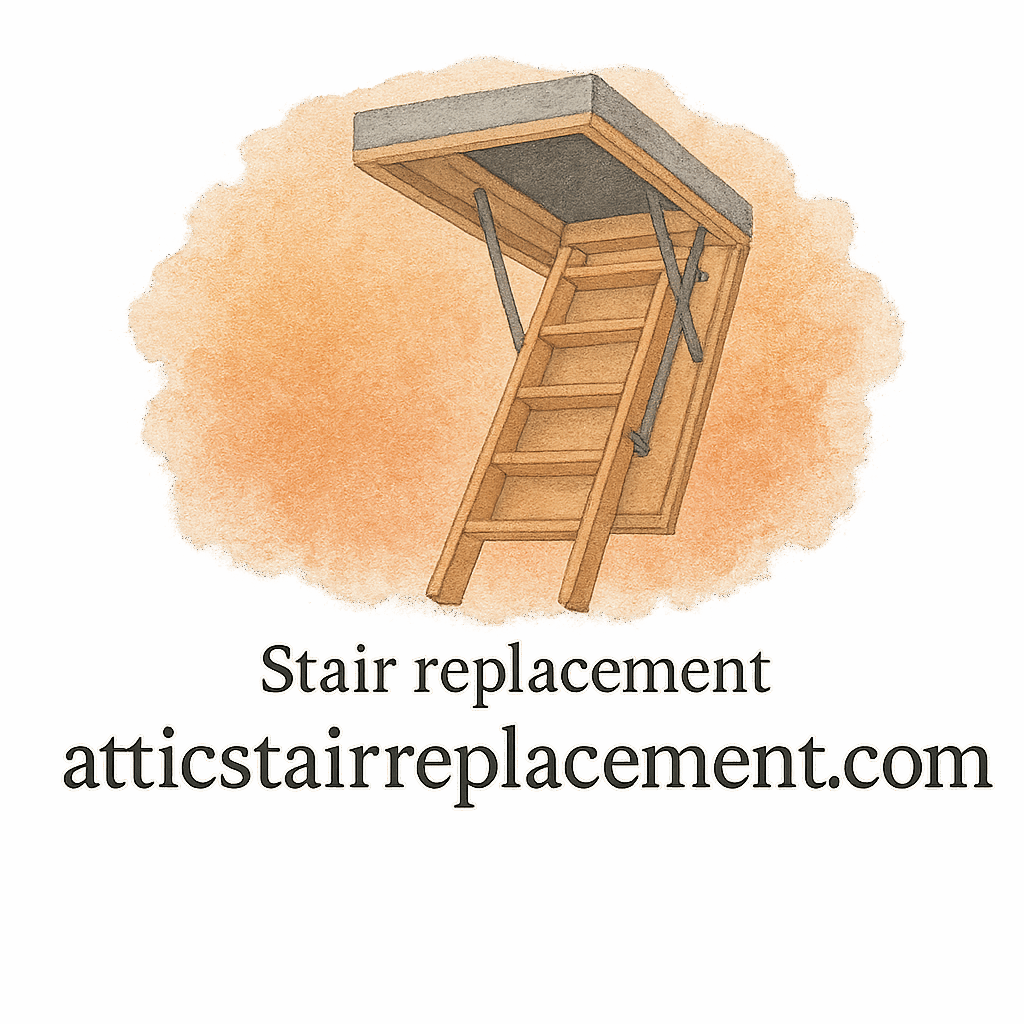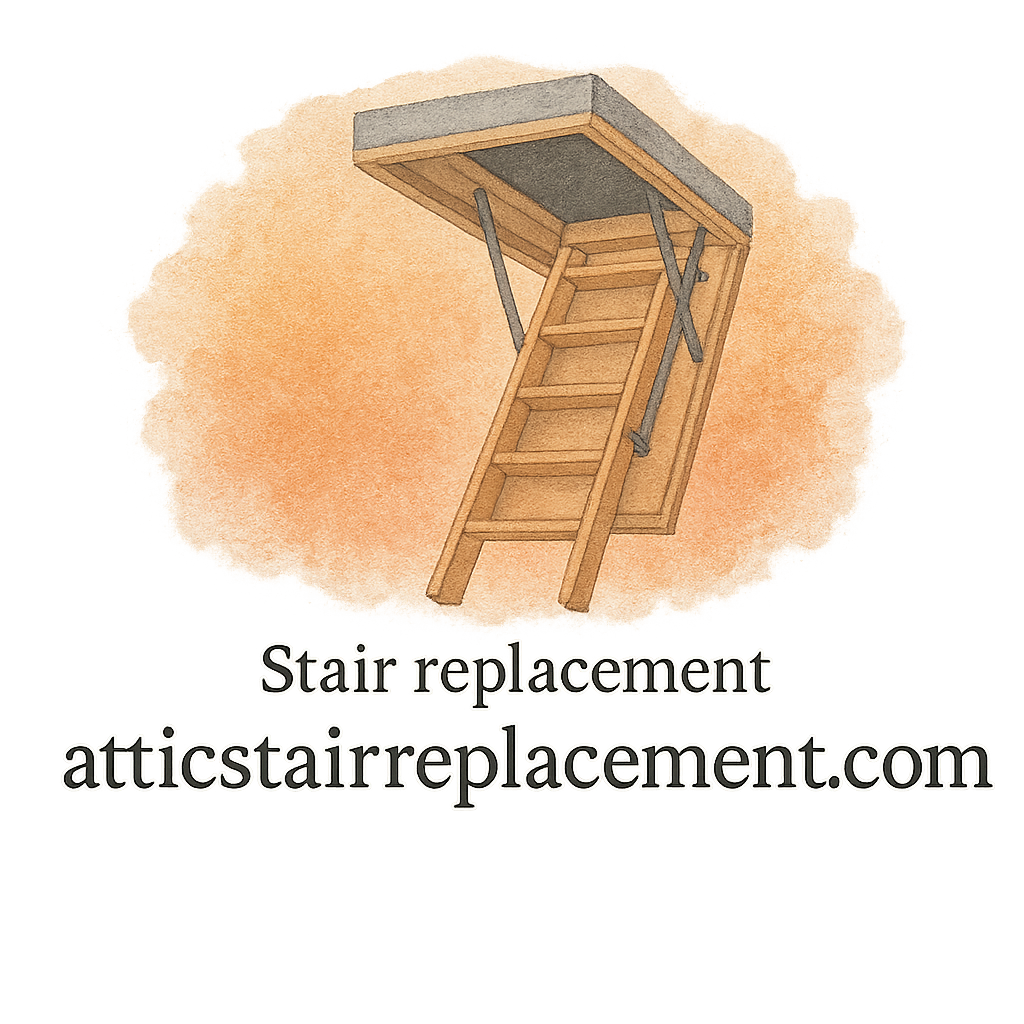Introduction: Why Attic Stair Replacement Costs Can Spiral
Replacing attic stairs might sound like a small home project, but if you’re not careful, the costs can quickly get out of hand. Many homeowners dive into attic stair replacement without considering hidden expenses, cheap material pitfalls, or even long-term maintenance. The result? You end up spending way more than expected.
In this guide, we’ll walk through the 8 cost mistakes to avoid in attic stair replacement so you can make smarter financial decisions and keep your project stress-free. Whether you’re considering a DIY installation (step-by-step guide here) or planning to hire a contractor, avoiding these mistakes will save you time, money, and headaches.
Mistake #1: Ignoring Your Budget Planning
Why setting a realistic budget matters
Budgeting isn’t just about guessing a number. You need to factor in materials, labor, safety features, and unexpected surprises. Without a clear budget, you’ll end up overspending on things you didn’t anticipate.
A well-planned budget ensures you can balance quality, safety, and affordability without feeling like you’re cutting corners.
How hidden costs sneak in
Here’s the catch: even if you budget, you might miss hidden costs like:
- Delivery fees for stair units
- Disposal of old stairs
- Minor structural adjustments
- Safety accessories (like handrails or locks)
Check out this hidden cost breakdown to better prepare yourself.
Mistake #2: Choosing Cheap Materials
The durability problem
It’s tempting to go for the cheapest attic stairs, but cheaper usually means weaker. Attic stairs made from low-quality wood or thin aluminum won’t last long. Imagine stepping on your new stairs and hearing a crack—scary, right?
Long-term vs. short-term savings
High-quality, durable materials may cost more upfront, but they’ll save you money on repairs and replacements later. Always weigh job quality against cost before deciding. Explore different material options in our product reviews.
Mistake #3: Skipping Professional Advice
When to hire an expert
DIY projects are fun, but attic stairs are tricky. An uneven installation or loose fittings could compromise your home’s safety. That’s when an expert’s advice pays off.
DIY vs. expert installation
Sure, a DIY attic stair replacement can save money. But unless you have solid carpentry skills, hiring a contractor may be the safer bet. Experts can also recommend stair types that fit your space and prevent costly mistakes.

Mistake #4: Overlooking Hidden Costs
Structural adjustments
Not every attic opening fits a new stair system perfectly. You might need carpentry work to widen or reinforce the frame. That’s extra labor cost right there.
Safety add-ons and upgrades
Things like slip-resistant treads, safety locks, and insulation covers may not come standard. These upgrades boost safety and efficiency but add to your bill. To learn more, see our attic safety guide.
Mistake #5: Hiring the Wrong Contractor
Quality of work vs. cost
Hiring the cheapest contractor is a gamble. A poorly installed attic stair will cost you more in repairs later. Always check reviews, references, and experience before choosing someone.
Red flags to watch out for
- No written contract
- Extremely low bids
- Lack of insurance or license
- Vague answers about materials
Protect yourself by reading our contractor hiring tips.
Mistake #6: Ignoring Maintenance and Repairs
Why ongoing care saves money
Even the strongest attic stairs need maintenance. If you neglect lubrication, bolt tightening, and wood care, you’ll shorten their lifespan.
Common repair costs to expect
Loose hinges, cracked steps, or worn-out springs are all repairable—but they add up. Staying on top of maintenance and repair keeps your investment safe.
Mistake #7: Not Considering Long-Term Energy Efficiency
Insulation and sealing around attic stairs
Your attic stairs are basically a hole in your ceiling. If poorly sealed, they’ll leak air and spike your energy bills. Adding insulation covers or weatherstripping can cut long-term costs.
Utility cost savings over time
Spending a little extra on insulation now means monthly savings later. Think of it as a home improvement investment rather than an added cost. Explore more in our home improvement section.
Mistake #8: Forgetting About Future Home Renovations
Planning attic stairs with remodeling in mind
If you’re planning a bigger home renovation later, think ahead. Installing attic stairs that might need to be removed or replaced during a remodel is wasted money.
Avoiding rework and double spending
Talk to your contractor about future plans. A little foresight prevents costly rework. See our renovation guide for more planning tips.
Tips to Save Money on Attic Stair Replacement
Smart shopping and timing
Shop during sales, compare prices, and don’t rush into the first option you see. Sometimes, waiting a few weeks can save you hundreds.
Comparing DIY and professional installation
DIY can cut costs, but only if you’re confident in your skills. Otherwise, factor in the potential cost of fixing mistakes. If in doubt, consult our expert advice.
Conclusion
Replacing attic stairs is more than just buying a ladder and screwing it into place. From budgeting and materials to contractors and maintenance, there are many pitfalls that can drain your wallet. By avoiding these 8 cost mistakes in attic stair replacement, you’ll protect both your home and your bank account.
Ready to start your project the smart way? Explore our detailed guides on DIY installation, expert contractor advice, and maintenance tips.
FAQs
1. What is the average cost of attic stair replacement?
It varies, but most homeowners spend between $400–$1,200 depending on materials, labor, and extras.
2. Can I replace attic stairs myself?
Yes, but only if you’re skilled in carpentry. For most people, hiring a professional is safer and more cost-effective.
3. How long do attic stairs typically last?
With proper care, high-quality attic stairs can last 15–25 years.
4. What type of attic stairs are most durable?
Heavy-duty wood or aluminum stairs generally last the longest. Read our durable options guide for more.
5. What hidden costs should I prepare for?
Structural adjustments, delivery fees, safety add-ons, and disposal of old stairs are common.
6. Do attic stairs affect home energy efficiency?
Yes! Poorly insulated attic stairs can leak air. Adding insulation helps reduce energy bills.
7. How can I save money on attic stair replacement?
Plan your budget, shop smart, consider DIY installation, and keep up with regular maintenance.


